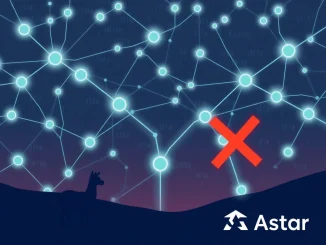
The world of decentralized finance (DeFi) has long eyed the vast capital locked within the Bitcoin network. Bringing Bitcoin (BTC) liquidity onto programmable Layer 2s and other chains has been a persistent challenge, often requiring significant trust assumptions or hefty collateral. But what if there was a way to bridge BTC more securely and efficiently? Enter Citrea, a Bitcoin Rollup project making significant strides.
Citrea Deploys Clementine Bridge on Bitcoin Testnet
Exciting news for the Bitcoin ecosystem! Citrea has officially deployed its Clementine Bridge on the Bitcoin Testnet. This isn’t just another bridge; it represents a crucial step towards integrating Bitcoin more deeply into the broader DeFi landscape while addressing some of the core issues plaguing existing solutions.
According to CoinDesk, the primary goal of the Clementine Bridge is to significantly ease the collateral demands typically required when bridging BTC to programmable Layer 2 solutions. Current methods often necessitate users locking up 150% or more of the value they wish to bridge, a capital-inefficient approach.
How Does BitVM2 Enable This Trust-Minimized Bridging?
The magic behind the Clementine Bridge lies in its foundation: BitVM2. BitVM (Bitcoin Virtual Machine) is a concept that aims to enable complex computations and verification on Bitcoin without altering its core protocol. BitVM2 is an evolution of this idea, designed to facilitate more expressive smart contract-like functionalities and verification processes directly verifiable on the Bitcoin chain.
Here’s a simplified look at why BitVM2 is a game-changer for bridges like Clementine:
- Enhanced Verification: BitVM2 allows for more robust and decentralized verification of off-chain computations or actions taken on Layer 2s. This means the state of the bridged BTC on the Layer 2 can be checked against rules enforced by Bitcoin itself.
- Reduced Trust Assumptions: By enabling verifiable computations, BitVM2 helps minimize the trust required in intermediaries or multisig setups that are common in older bridging methods. Users can have greater confidence that their BTC is secure and redeemable based on verifiable proofs.
- Challenging Invalid State Transitions: BitVM2 provides a framework for challenging invalid state transitions on the Layer 2. If someone tries to improperly move bridged BTC, the BitVM2 setup allows for a challenge process rooted in Bitcoin’s security.
This technological underpinning is what allows Citrea to propose a bridge that requires less collateral and offers a more trust-minimized experience for users wanting to utilize their BTC on other networks for DeFi activities.
The Significance for Bitcoin Layer 2s and DeFi
The successful deployment of the Clementine Bridge on the Bitcoin Testnet is a significant milestone, not just for Citrea, but for the entire Bitcoin Rollup and Layer 2 ecosystem. What does this development mean?
- Unlocking BTC Liquidity: A more efficient and trust-minimized bridge makes it easier and safer for holders to move their BTC to Layer 2s where they can interact with smart contracts and DeFi protocols. This could potentially unlock billions in capital for new applications.
- Boosting Layer 2 Adoption: Bridges are critical infrastructure for Layer 2s. A better bridge directly contributes to the usability and attractiveness of Bitcoin Rollup solutions and other Layer 2s built on or connected to Bitcoin.
- Advancing Bitcoin Programmability: Projects like Citrea and technologies like BitVM2 push the boundaries of what’s possible with Bitcoin without changing its core principles. They demonstrate that Bitcoin can be the secure base layer for a complex, programmable ecosystem.
- Setting a Standard: If the Clementine Bridge proves successful on testnet and eventually mainnet, it could set a new standard for how BTC is bridged, encouraging other projects to adopt similar trust-minimized approaches.
This move directly supports broader verification of Layer 2s and sidechains, ensuring that their operations can be anchored more securely back to the robust security of the Bitcoin network itself.
What’s Next for Citrea and the Clementine Bridge?
While deployment on the Bitcoin Testnet is a major achievement, it’s just the beginning. The testnet phase allows Citrea to rigorously test the Clementine Bridge, identify and fix bugs, and gather feedback in a live environment without risking real user funds. This is a crucial period for refining the technology and ensuring its robustness.
The next steps will likely involve extensive testing under various conditions, security audits, and community engagement before any potential deployment on the Bitcoin mainnet. The success of the bridge will depend on its performance, security, and adoption by users and other Layer 2 projects.
Conclusion: A Promising Step for Bitcoin DeFi
Citrea’s launch of the Clementine Bridge on the Bitcoin Testnet using BitVM2 is a highly promising development for the future of Bitcoin DeFi. By tackling the critical challenge of trust-minimized and capital-efficient BTC bridging, Citrea is paving the way for greater interoperability and the unlocking of significant value within the Bitcoin ecosystem. While still in the test phase, this move signals a strong commitment to building essential infrastructure that could help bring Bitcoin’s immense liquidity into the burgeoning world of decentralized applications and Bitcoin Rollup solutions.



